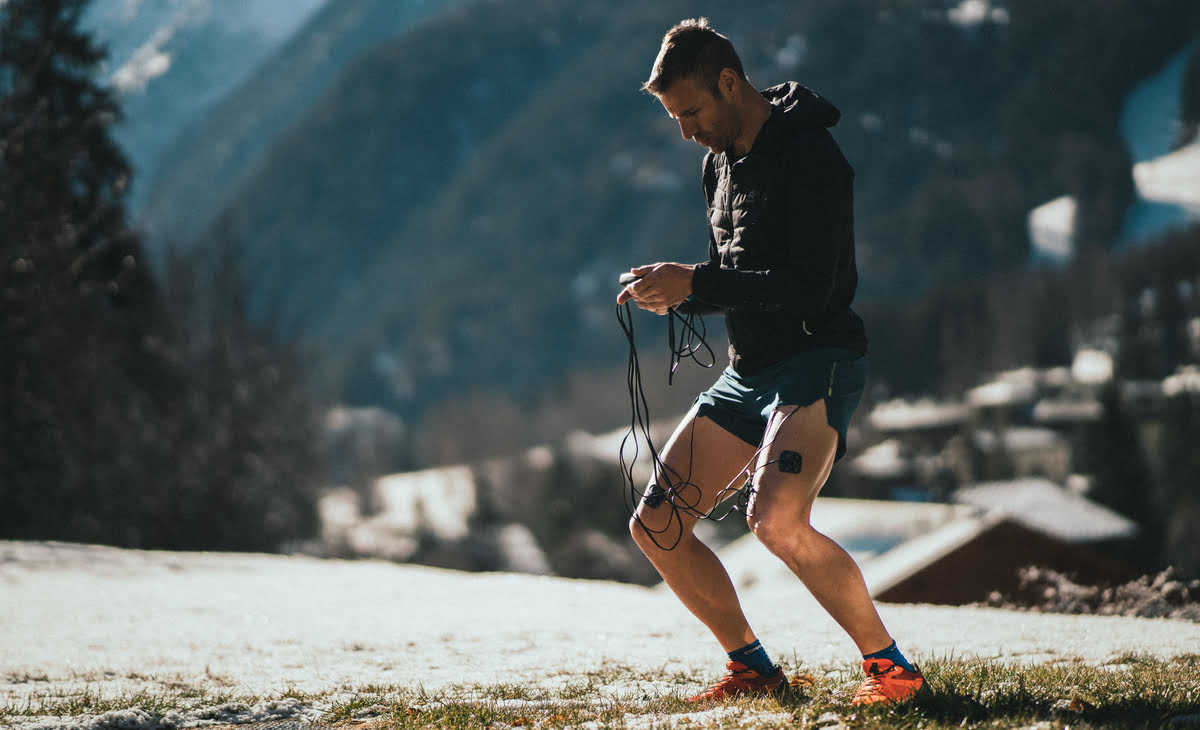Compex Meets.... Sports Cardiologist Dr Thierry Laporte

Compex Meets... Dr Thierry Laporte, Sports Cardiologist in Bordeaux. Head of Pôle Activité Santé Hôpital Bagatelle.
Dr Thierry Laporte assisted us with putting together our Marathon Training Plan.
The Role of a Sports Cardiologist
Sports cardiology is a rapidly evolving domain focusing on the healthcare of athletes and physically active individuals, addressing both diagnosed and undiagnosed cardiovascular conditions. A sports cardiologist must integrate various cardiological specialties, including cardiac imaging, electrophysiology, structural heart disease, and exercise physiology.
It has been almost 20 years since I started using VO2 max assessment tests and training thresholds on runners and cyclists. As a Sports Cardiologist, it is exciting that from an individual’s data it is possible to offer a customised training program.
Marathon Training and Recovery Tips
As well as a heart-rate monitor, I often recommend using electrical muscle stimulation; EMS provides a useful compliment to conventional training sessions, particularly in the following uses:

Use #1 - Recovery
After intense ‘qualitative’ sessions, usually involving a 30/30 split (30 seconds on, 30 seconds off resting) or after a session at threshold, using the ‘Training Recovery’ program can speed up the recovery process. The program helps to re-build muscles, and thus empowers athletes to train again the next day without qualitative or quantitative accumulative fatigue. This reduces the risk of over-training.
Use #2 - Muscle Conditioning
The ‘Endurance’ program is not a substitution for a conventional long run session. However, it helps to prepare the muscles stimulated during the active session. Compex stimulation can shorten the duration of a session by 30 minutes, limiting the musculoskeletal fatigue while maintaining the same muscle charge. Even in exceptional circumstances, such as poor weather or geographical impossibility, the complete ‘Endurance’ program can mitigate the adverse consequences of missing a session

Example #3 - Increasing Bloodflow in Tapering Phase
I recommend to reduce the training workload in the days leading up to the competition. In this case, I advise using the ‘Capillarisation’ program every 2 days, 10 days before the race. This program increases the blood flow, thereby improving the muscular efficiency during an endurance effort. It also has an advantage in preventing additional muscle fatigue. The ‘Capillarisation’ session can be integrated on a weekly training schedule in alternation with a muscle-strengthening session. There is an drastic improvement in stride-efficiency the days following 'Capillarisation'. This is easy to track with a heart rate monitor; the runner will see an increase in speed whilst keeping the same heart-rate level.
Use #4 - Injury Rehabilitation
The other area in which muscle stimulation is beneficial is for a prolonged immobilization. This could be as a result of a disease, muscle or tendon injury or after an accident or trauma. In all of the above cases, immobilisation will result in atrophy and physical degeneration. Electrical muscle stimulation programs like ‘Reinforcement’ or ‘Muscle Atrophy’ (if atrophy is present), used on a daily basis, will limit the adverse consequences of ceasing to train. Keep in mind that it takes twice the length of time incapacitated to recover the former muscle strength and condition.
Compex - Always with you
We're on the side of athletes, amateurs and also ordinary people. From the search for improved performance to post-injury recovery, from post-fatigue massage to pain treatment. At Compex, we have just one objective: people's well-being.
To choose the one that's right for you, take a look at our buying guide.
Read our experts' advice on the official blog, catch the latest Compex news by subscribing to our newsletter. You can also watch our videos on the YouTube channel and follow us on Facebook and Instagram to stay up-to-date.
-
View Details
 €429.99
€429.99Tones your muscles, sculpts your body, helps you relax and recover faster.
With all the basic muscle stimulation features and mi technology, SP 2.0 is the ideal partner for athletes who practice their activity 1 or 2 times per week.
Compare this to our other muscle stimulators, learn more about training using a Compex device as well as bespoke training plans, and find out more about what muscle stimulation is.
Learn More -
View Details
 €649.99
€649.99Improves your performance and helps you recover faster.
Including all the features of SP 2.0, SP 4.0 also offers rehabilitation programs that can be helpful for athletes with frequent injuries who practice their activity 3 times per week.
Compare this to our other muscle stimulators, learn more about training using a Compex device as well as bespoke training plans, and find out more about what muscle stimulation is.
Learn More -
View Details
 €899.99
€899.99Improves your strength and restores muscle volume, helps you relax and recover faster.
Designed for athletes who practice their activity more than 3 times per week, SP 6.0 includes all the features of SP 4.0, but with wireless features that ensure total freedom of movement. Its easy-to-use color screen even shows you where to place the electrodes!
Compare this to our other muscle stimulators, learn more about training using a Compex device as well as bespoke training plans, and find out more about what muscle stimulation is.
Learn More -
View Details
 €1,199.99
€1,199.99Optimizes your strength and endurance, helps you recover faster, while helping to avoid injury and treating pain.
Designed for athletes, SP 8.0 is the TOP of the range in terms of wireless muscle stim. Connectable and modular, SP 8.0 includes the mi-Autorange feature that continually brings you better results.
Compare this to our other muscle stimulators, learn more about training using a Compex device as well as bespoke training plans, and find out more about what muscle stimulation is.
Learn More -
View Details
 €1,299.99
€1,299.99The Compex SP 8.0 WOD Edition muscle stimulator boasts our top of the range muscle stimulation technology plus some useful additional extras.
Versus our standard SP 8.0, the WOD Edition also offers:
- Additional Warranty (5 years in total)
- Additional packets of Electrodes
- Travel Pouch for your device
- 4x Elastic Straps
Learn more about training using a Compex device and use our bespoke training plans to help achieve your goals.
Learn More -
View Details
 €299.99
€299.99Successful muscle preparation, effective action against pain and injury and optimal recovery: The Runner is your best ally.
Product not available for Ireland or UK
Learn More -
View Details
 Special Price €349.99 Regular Price €419.88
Special Price €349.99 Regular Price €419.88The Compex Runner Pack is the ideal choice for runners of all abilities. It boasts a range of products aimed at boosting both recovery and performance.
The pack consists of:
- 1x Compex Runner electrostimulator
- 1x pair of Compex Recovery Socks
- 1x roll of Compex Molecule vibrating massage ball


